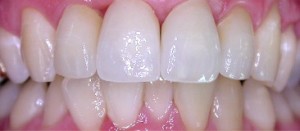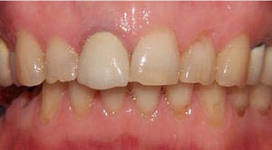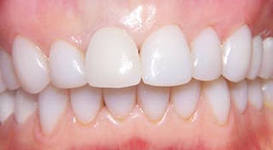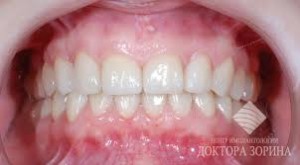Porcelain veneers
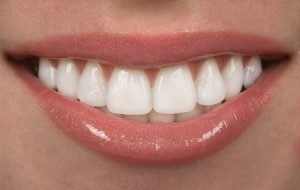
Porcelain veneers or porcelain linings are one of the latest achievements in cosmetic dentistry.
Veneers are thin plates that are superimposed on the front surface of the teeth.
Porcelain linings allow:
- eliminate defects in tooth enamel;
- hide the presence of gaps between the teeth;
- fix the shape of the teeth.
Manufacturing steps
- Inspection, diagnostics, computer simulation of a smile on the screen, photographing: “before” and “after” the installation of veneers.
- Preparing a tooth for a veneer pad: an enamel layer equal to the thickness of the future veneer is removed from the front of the tooth.
- Taking impressions in one of the ways: from the impression mass or using a special machine (milling machine), which makes an impression of the tooth optically. The machine cuts porcelain veneer in a few minutes. Some dentists believe that hand-made veneer has the best, both aesthetic and physical properties. If the impression from the tooth is done manually, the veneer lining is made within 1-2 weeks.
- During the manufacture of porcelain veneer, a temporary overlay is applied to the treated tooth.
- Porcelain veneer fitting. An assessment of the pads is carried out, their adherence to the tooth surface and the matching of the color of the veneer and the teeth are checked. In case of discrepancy between the proportions of the lining and the tooth, the veneer is corrected. If the color of the lining does not match the color of the tooth, its shade can be changed using a suitable color cement.
- Bonding tooth pads.
- Removing cement residues, if necessary - grinding and turning, bite check.
Video: Perfect smile without braces and whitening
Indications for installation
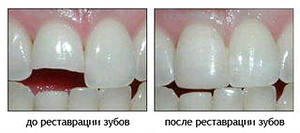
- Rough surface, cracks and punctures of teeth.
- Presence of fillings on the tooth surface that have changed color.
- In the presence of stains on tooth enamel as a result of the use of drugs, past illnesses, etc.
- Large gaps between the teeth, uneven dentition.
How to store
- The porcelain overlay requires the same hygienic care as for the teeth. You need to clean the veneer daily with fluoride toothpaste, brushes and floss.
- Thorough oral hygiene will minimize the chance of tooth decay on a tooth-free tooth surface.
- Porcelain veneers cannot be subjected to increased physical exertion. It is not recommended to bite the ends of hair and nails with teeth. It is forbidden to crack ice with your teeth, open bottles. These actions may result in damage or displacement of the veneer.
- You can’t grit your teeth. With bruxism, the dentist can make a plastic mouthguard that protects teeth during sleep.
- It is necessary to minimize the effect of coloring pigments on the teeth.Porcelain linings are not sensitive to coloring matter, but the cement may stain with the help of which veneers are attached to the tooth.
Repairs
If porcelain veneer is broken, carefully remove it from the mouth.
- If this is one part, then it is most likely that the veneer simply peeled off the tooth and remained intact.
- If, however, the pad is broken, then there is only one option - to make a new one.
- To understand what happened to the veneer, you need to carefully consider it. The contours of the veneer should be symmetrical and rounded. If there is residual veneer on the tooth, it is obvious that it has broken.
In any case, the segments of the broken denture should be placed in a clean box or jar of tablets and shown to the dentist. He, in turn, will be able to understand why this happened.
Pros and Cons (disadvantages)
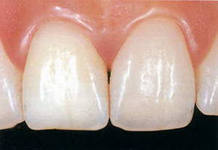
- Porcelain-coated teeth look natural due to the transparency of the veneer.
- Porcelain veneers are stain resistant.
- Porcelain linings eliminate minor cosmetic defects in the teeth.
- The disadvantage of porcelain linings is that they can peel off or break at any time. If the veneer is broken, it is impossible to restore it. When peeling, there is a chance that the pad can be glued.
- The installation process of porcelain veneers is irreversible, as it is impossible to restore the sealed tooth area under the pad and the tooth cannot look like before.
Contraindications (complications)
In some cases, porcelain veneers may be contraindicated.
Contraindications to the installation of overlays for teeth:
- Tooth decay and periodontitis (gum disease). Pads can be placed after appropriate treatment.
- With the loss of a large area of the tooth.
- Teeth with little enamel or none at all.
- Bruxism (gnashing of teeth).
How to attach (installation)
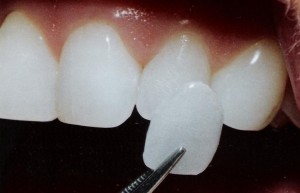
- After the dentist and patient confirm the shape and color of the veneer, it is glued to the tooth. The tooth is cleaned and polished.
- Using a special gel, the tooth is etched. This is done so that the tooth surface becomes rough, which will ensure its stable connection with cement.
- A drop of cement is placed on the vinyl pad and glued to the tooth.
- After gluing, the correctness of the “veneer” of the veneer on the tooth is checked and the cement is hardened using blue light. Hardening occurs almost instantly.
Life time
Porcelain dentures do not have a defined lifespan. Of course, you should not expect that porcelain veneers on the teeth will last forever, although several years is a very real figure.
The service life of porcelain veneers is highly dependent on their care. With proper handling of the pads, good hygiene, the shelf life of the pads can exceed 10-12 years.
Photo: before and after
Cost
Porcelain veneers are made on laboratory equipment. The cost of porcelain veneer includes consumables, the work of a dental technician, depreciation of equipment.
In this regard, porcelain vinyl linings are quite expensive.
The price of veneers, depending on the material:
| Type of veneer | The cost of one veneer |
| Porcelain veneer | 14,000 rub. |
| Zirconium Veneer | 17000 rub. |
| Composite Veneer | 7000 rub. |
Video: Veneers

